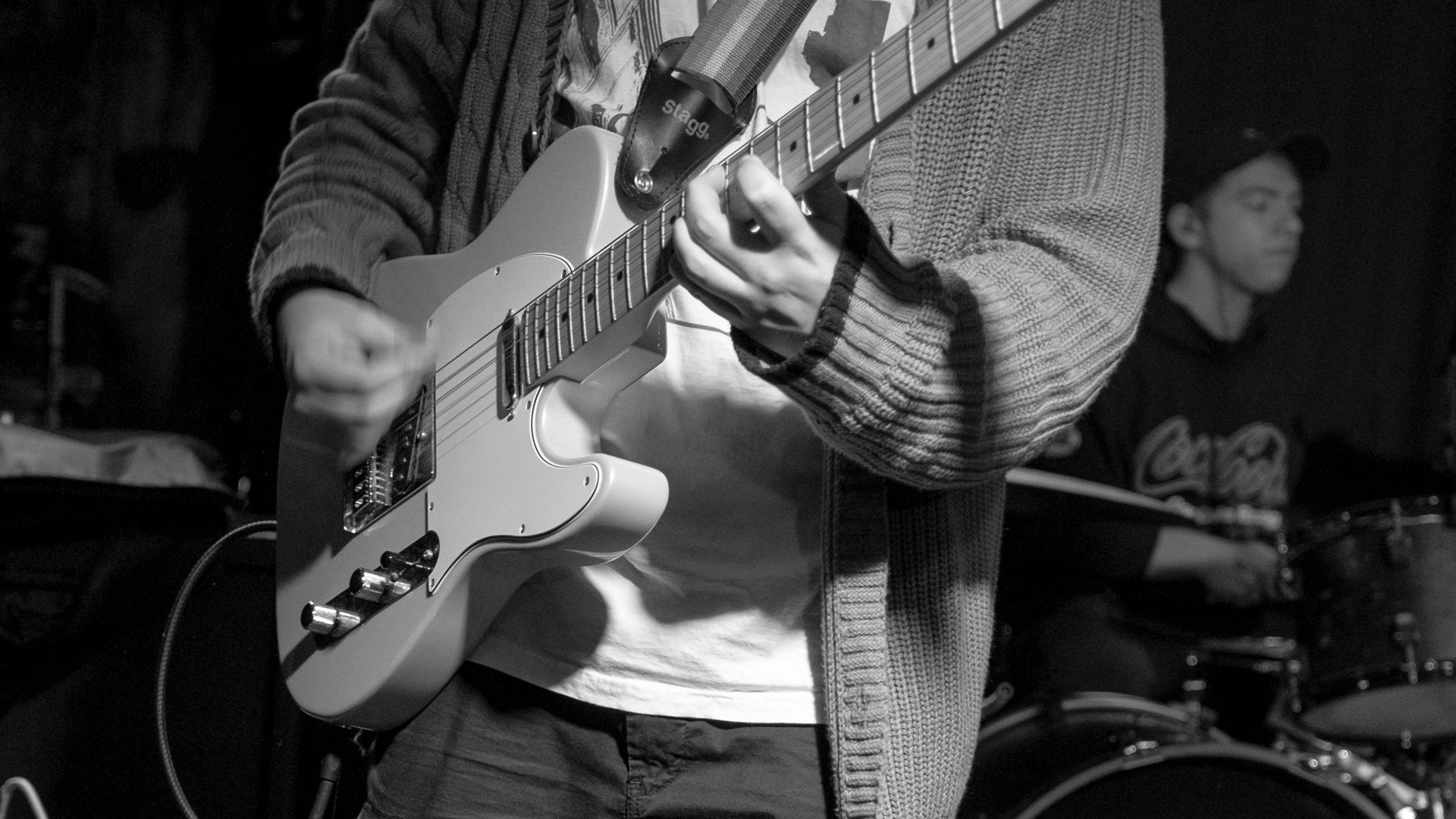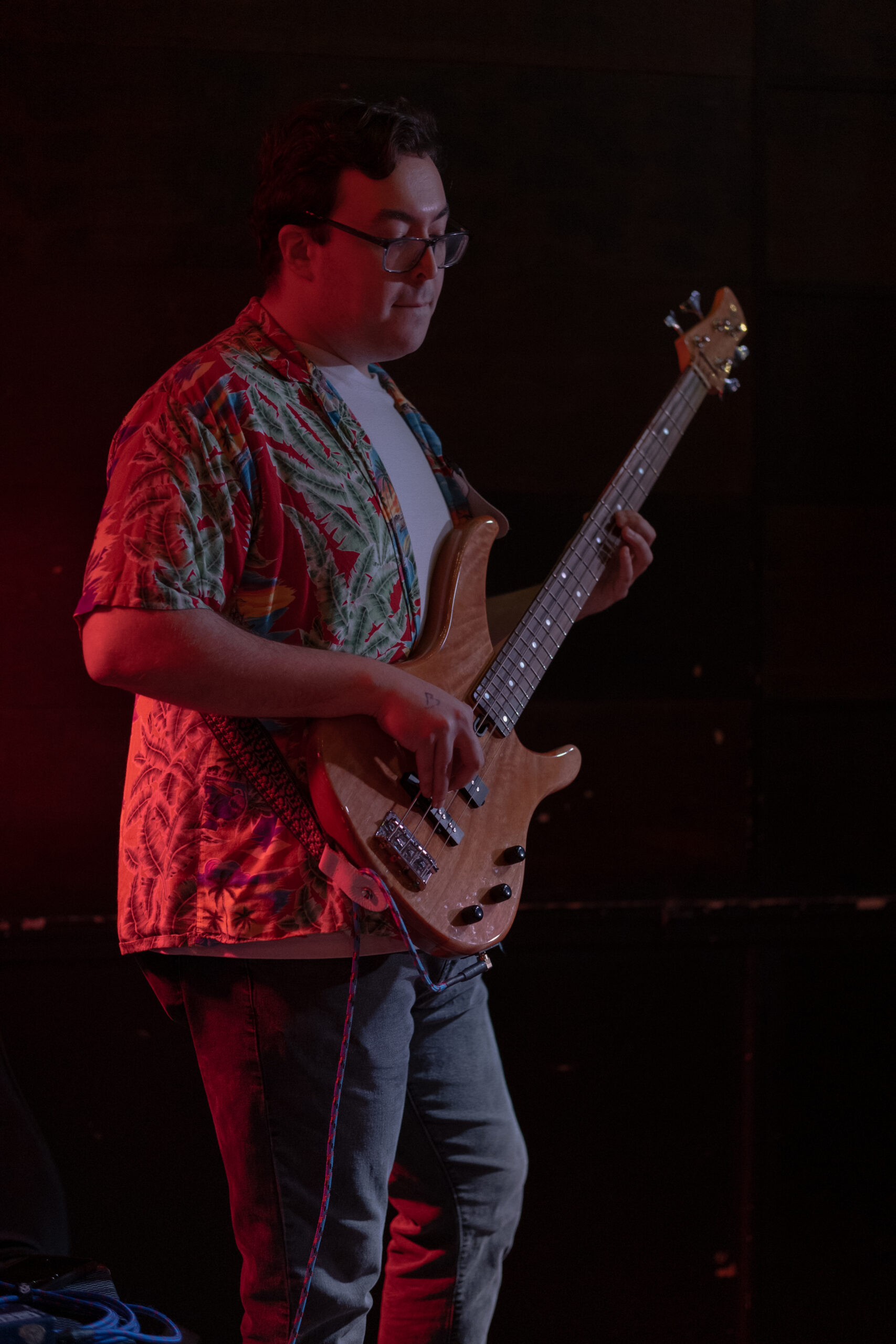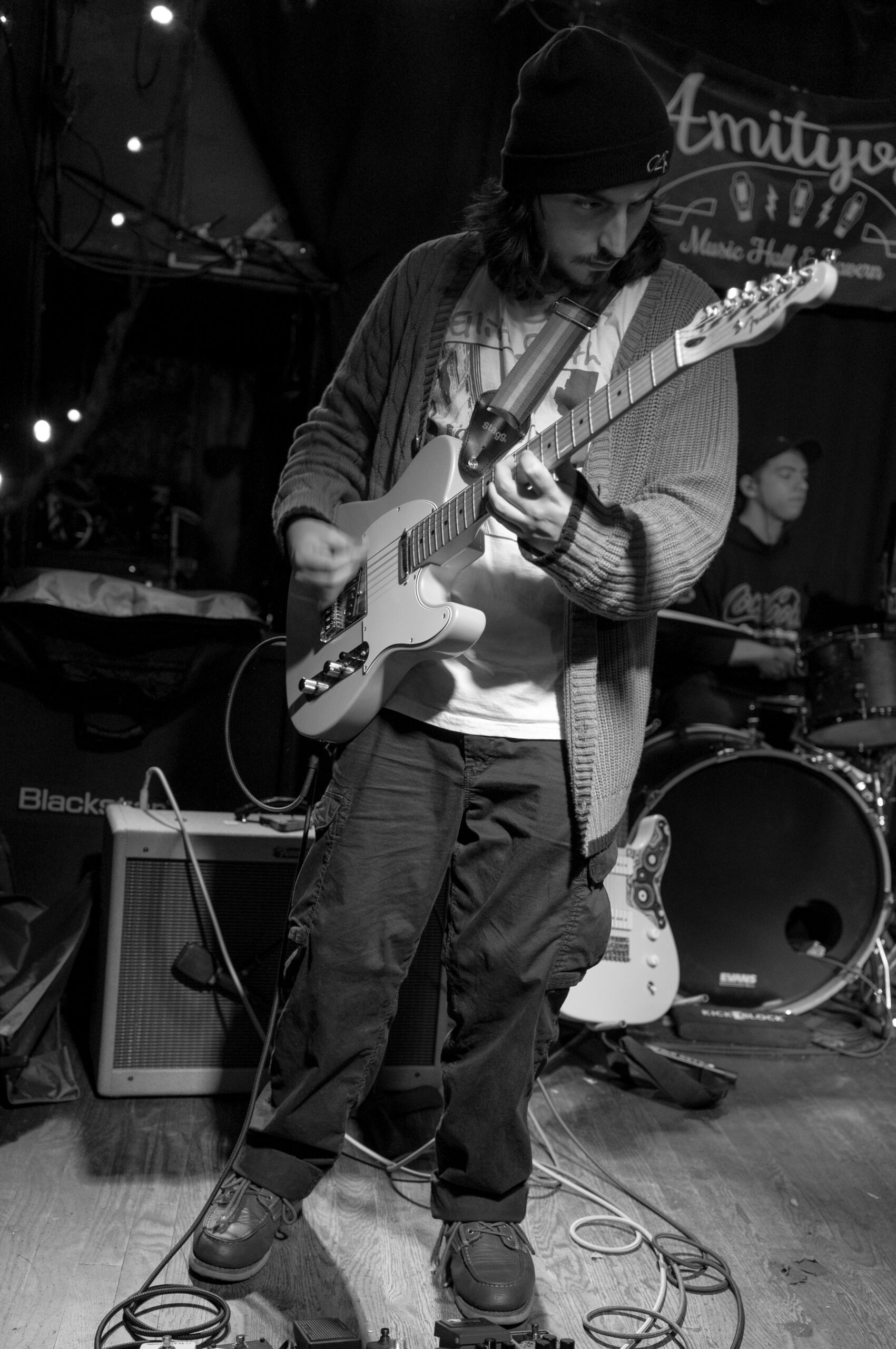Everyone needs to get their start somewhere. That is precisely why I – someone who only picked up a camera for the first time in October of 2022 – decided to give concert photography a shot at a local DIY rock show to finish out the year. It was the perfect way to learn something new while also (hopefully) providing some content for up-and-coming artists who are on the grind to make a name for themselves.
So, I hit up some of the artists and asked if they wouldn’t mind me capturing the show. Once I had their permission, I was off to study up and configure my camera bag for my first big night as a photographer. I’m a Fujifilm shooter (right at home at an indie rock event), and thankfully SIGMA has two very fast prime lenses perfect for the job — the 23mm F1.4 DC DN | Contemporary and the 56mm F1.4 DC DN | Contemporary.
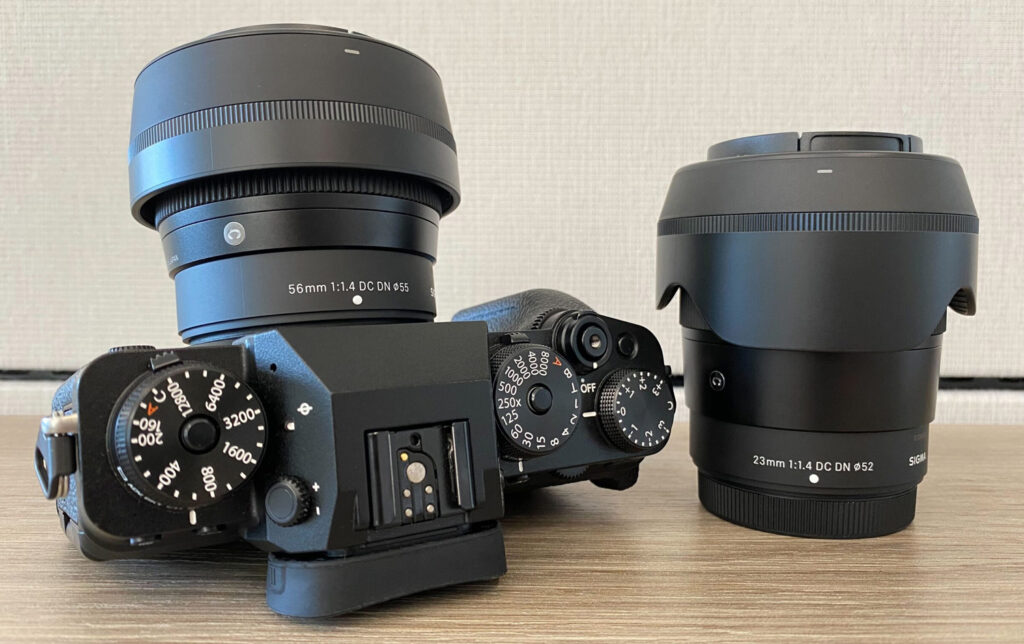
The wide-angle plus portrait-length combo
The first thing I learned when selecting gear for a concert was to opt for the brightest aperture lenses possible. Don’t be fooled by the stage lights, concert venues are still dark spaces; the smallest aperture one should ever reach for is 2.8. For my needs, it was recommended I try out the 23mm and 56mm, specifically for their wide F1.4 aperture and for the fields of view they would cover.
The 56mm in my (albeit limited) experience was the easiest lens to shoot with, allowing me to punch in for portrait-style closeups and dramatic moments. On the flipside, the 23mm was great for capturing several bandmates together, full body shots of performers while standing close to the stage, or shots of the crowd while off to the side. It’s the classic wide-angle + portrait lens combo (approximately 35mm and 85mm in full-frame terms) and with the Fujifilm X system, the lenses maintain a compact footprint that keeps the gear light in the hands.
Picking primes over zooms
Now, why didn’t I grab a more versatile zoom lens, like the 18-50mm F2.8 DC DN | Contemporary, which is also available for Fujifilm X? Well, the primary reason is because I knew I would need to increase my ISO or slow my shutter speed to compensate for exposure, which means risking more noise in the image or motion blur. The other reason is because the 56mm in particular would provide me with a longer reach than what the 18-50mm could offer, which I found to be quite useful even in a fairly cramped music hall.
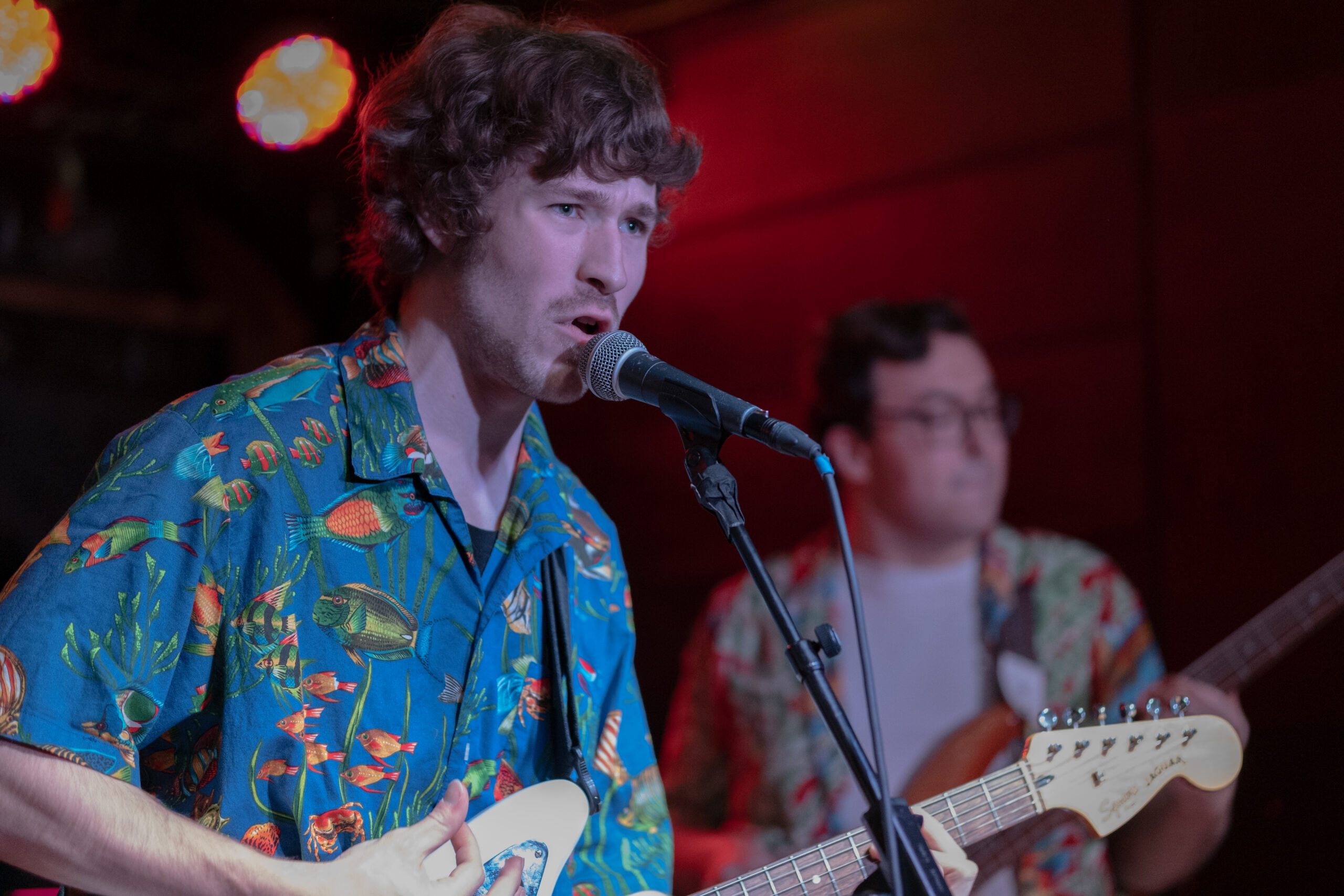
I would also be remiss if I neglected to mention that prime lenses are what SIGMA Ambassador and pro concert photographer, Anabel DFlux, recommends when shooting music photography. The vast majority of my pre-show research came from her webinar with Adorama, which covers everything from her favorite lenses, to how to configure your camera, to concert photography ethics. She also penned an article for SIGMA that outlines some of her favorite full-frame gear for concert photography. Check them out below!
Planning how to shoot in an unpredictable environment
Speaking of concert photography ethics, that was a major factor in how I’d planned to photograph the show. As Anabel points out in her webinar, ultimately the show is being put on for the fans and attendees. Especially when shooting in a music hall or bar, where there’s no photography pit or separation from the crowd, it’s generally best practice to not stand in the middle of the crowd where you risk blocking someone’s view or having your gear knocked out of your hands.
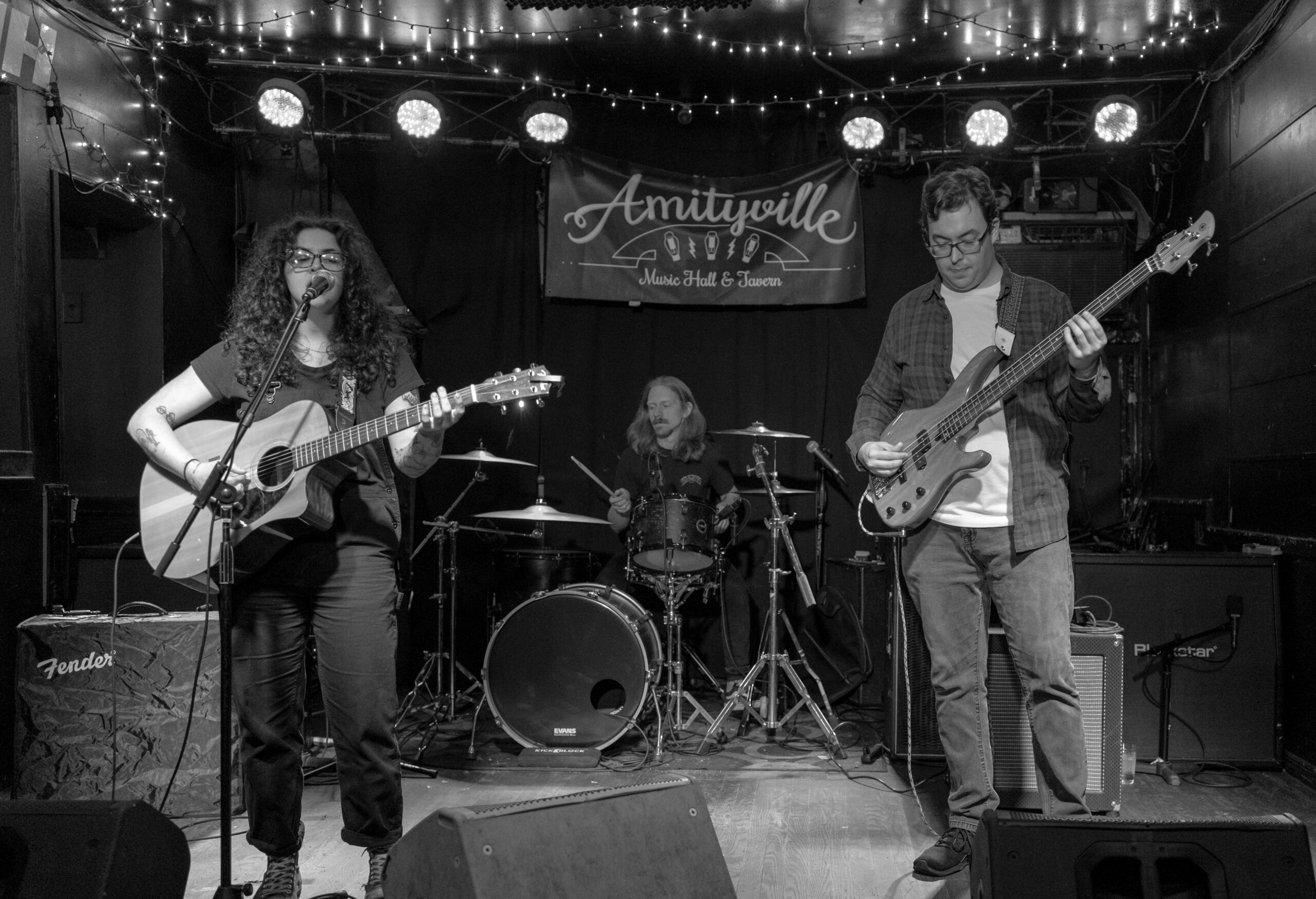
After getting there early enough to check out the venue and scope out potential shooting angles, I found myself mostly standing at the edges of the stage early in the set to get a couple forward-facing shots of the band, typically using the 56mm to hone in on each member of the band at least once. When things began to ramp up, I would move side-stage, away from the crowds to snap shots of the drummer or of the band looking out towards the audience.
Don’t not capture a moment
Of course, if something unexpected happens, you’ll be forced to rely on whatever lens is in your hand at the moment. It was for this reason I most often found myself gravitating towards the 56mm; I was so afraid to be caught unawares without it! Framing the performers from a chest-up portrait perspective, especially during climactic choruses or strung-out solos, was my primary goal considering some of these bands still hadn’t released the music they were performing. This left me only able to guess how their live performances would play out.

Capturing the moment in a concert setting isn’t easy; there were plenty of moments while side-stage that I’d wished I’d been closer to the crowd and vice versa. As a concert photographer, you can only hope you’ll be in the right place at the right time, and that the angle from your location will look good enough in the final product. Regardless of where you are, always try to take the shot if you notice something exciting. The result may turn out better than you think, and you’ll be glad you took the chance.
Final Thoughts
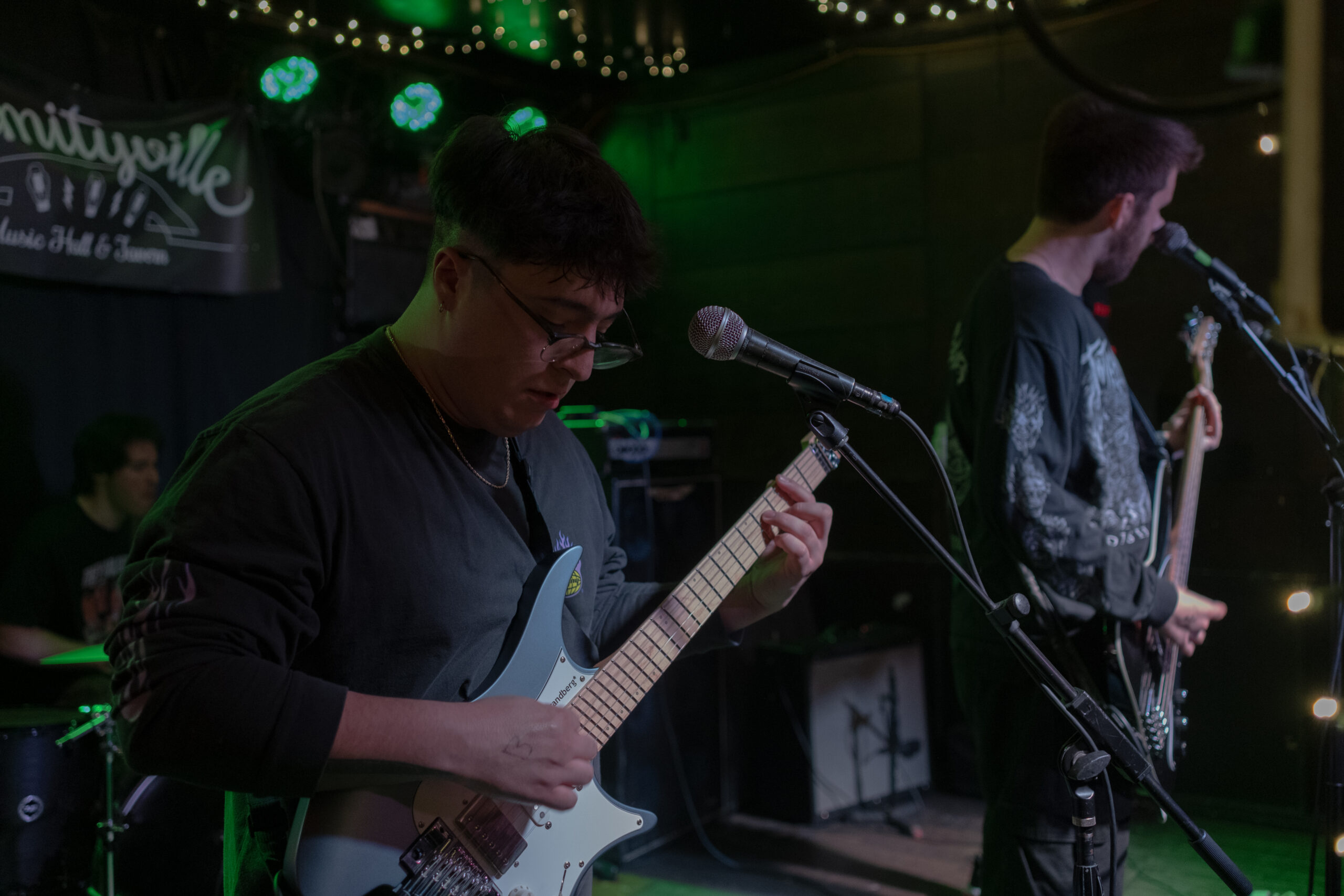
Obviously, I still have a lot to learn. It was only after the show that certain tweaks to my camera settings seemed obvious, but I’ve always learned best through doing, and I’m confident I’ll be better prepared next time. At the end of the day, I’m glad I took the leap into trying concert photography – the experience was not only enjoyable, but extremely memorable. Plus, I’ve got some cool visual souvenirs to boot.
It’s ultimately thanks to my SIGMA lenses, though, that I was able to capture the photographs I did. The 23mm F1.4 and 56mm F1.4 allowed me the flexibility to perform in a fairly unpredictable environment, and gave me the confidence to try shooting something new.
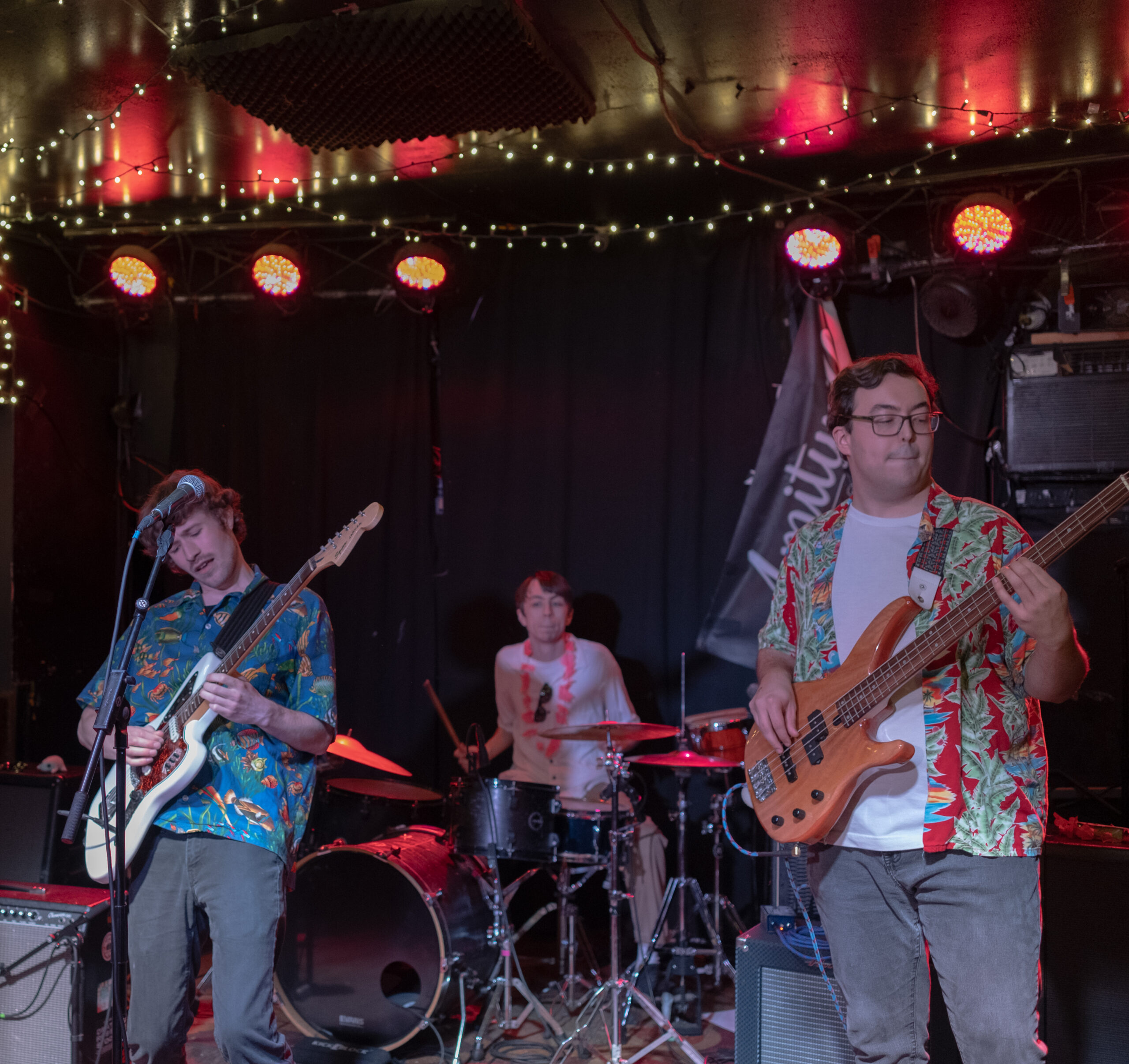
Try something new!
for Fujifilm X Mount, Sony E-mount, and L-Mount mirrorless systems

